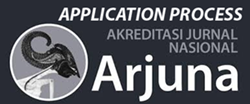Navigating Hardships: A Mixed Method Approach of Academic Resilience amid Catastrophes among First Generation Learners of Kashmir
DOI:
https://doi.org/10.59653/jemls.v3i03.1844Keywords:
Catastrophes, Academic Resilience, First generation learners, KashmirAbstract
This study was intended to examine the impact of catastrophes among first generation learners of Kashmir and consequently how they responded the adversities. The study employed the descriptive and explanatory design. In the descriptive survey method 300 first generation learners were used as sample by means of purposive sampling with 150 male and 150 female pupils. The academic resilience was measured by means of Academic Resilience scale by Mihir Kr. Mallick and Simranjit Kaur (2017). The statistical techniques employed to measure the academic resilience are Percentage and t-Test. The results revealed that that out of 300 first generation learners of Kashmir 12, 75, 151, 38, 9, 9, and 6 have extremely high, high, above average, average, below average, low and extremely low academic resilience respectively i.e. 4%, 25%, 50.33%, 12.67%, 3%, 3% and 2%. Besides a significant difference was observed between male and female first generation learners of Kashmir, males were found to be more resilient than females. The in-depth analysis by means of interview suggested that most of the first generation learners of Kashmir are having sound academic resilience and they manage successfully the adversities like covid-19 lockdown by means of their personal positive efficacy beliefs and strong social cohesion.
Downloads
References
Alva, S. A. (1991). Academic invulnerability among Mexican American students: The importance of protective resources and appraisals. Hispanic Journal of BehavioralSciences, 13, 18-34.
Bhat, N.A.(2020). Education In Kashmir: Scenario Within Double Lockdown—Covid-19 & Conflict. Palarch’s Journal of Archaeology of Egypt/Egyptology. 17(7).
Chaturvedi, K. Vishwakarma, D. K.,&Singh,N.(2021). COVID-19 and its impact on education, social life and mental health of students: A survey. Children and Youth Services Review. 121.
Creswell, J. W., & David Creswell, J. (2018). Research Design: Qualitative, Quantitative, and Mixed Methods Approaches.
Dauber, S. L., Alexander, K. L., &Entwisle, D. R. (1996). Tracking and transitions through the middle grades: Channeling educational trajectories. Sociology of Education, 69, 290-307.
Dole, C., Hayashi, R., Poe, A., Sarat, A., &Wolfson, B. (2016). When iscatastrophe?: An introduction. The Time of Catastrophe. Routledge: 1-18.
Howard, S. & Johnson, B. (2000). What makes the difference? Children and teachers talk about resilient outcomes for children 'at risk'. Educational Studies, 26, 321-337.
Jimerson, S., Egeland, B., &Teo, A. (1999). A longitudinal study of achievement trajectories: Factors associated with change. Journal of Educational Psychology, 91, 116-126.
Kurtaliqi, F., Lancelot Miltgen, C., Viglia, G., & Pantin-Sohier, G. (2024). Using advanced mixed methods approaches: Combining PLS-SEM and qualitative studies. Journal of Business Research, 172. https://doi.org/10.1016/j.jbusres.2023.114464
Mallick, M. Kr. & Kaur, S. (2017). Manual for Academic Resilience Scale. National psychological corporation Agra India.
Mahapatra, A., Sharma,P. (2020). Education in times of COVID-19 pandemic: Academic stress and its psychosocial impact on children and adolescents in India. International Journal of Social Psychiatry. 1(3).
Mannan, A. (2019). Education Paralysis in Kashmir: Need to Protect the Future. Observer Research Foundation.
Sahu, P. (2020). Closure of universities due to Coronavirus Disease 2019 (COVID-19): Impact on education and mental health of students and academic staff. Cureus, 12(4), e7541.
Sarmiento,A.S., Ponce,R.S. &Bertolin, A.G. (2021). Resilience and COVID-19. An Analysis in University Students during Confinement. Educ. Sci., 11, 533. https://doi.org/10.3390/
Syrjä, P., Puumalainen, K., Sjögrén, H., Soininen, J., & Durst, S. (2019). Entrepreneurial orientation in firms with a social mission - a mixed-methods approach. Cogent Business and Management, 6(1). https://doi.org/10.1080/23311975.2019.1602016
Takona, J. P. (2024). Research design: qualitative, quantitative, and mixed methods approaches / sixth edition. In Quality and Quantity (Vol. 58, Issue 1). https://doi.org/10.1007/s11135-023-01798-2
Thomeer, M. B., Brantley, M., & Hernandez, E. M. (2024). Using mixed methods approaches to study families and relationships. Journal of Marriage and Family, 86(5). https://doi.org/10.1111/jomf.12974
Wang, M. C., Haertal, G. D., & Walberg, H. J. (1994). Educational resilience in inner cities. In M. C. Wang & E. W. Gordon (Eds.), Educational resilience in inner-city America: Challenges and prospects (pp. 45-72). Hillsdale, NJ: Lawrence Erlbaum.
Weeden, K. A., & Benjamin, C. (2020). The small-world network of college classes: implications for epidemic spread on a university campus. Sociological Science, 7, 222–241.
Weyant, E. (2022). Research Design: Qualitative, Quantitative, and Mixed Methods Approaches, 5th Edition. Journal of Electronic Resources in Medical Libraries, 19(1–2). https://doi.org/10.1080/15424065.2022.2046231
Xiang, Y. T., Li, W., Zhang, Q., Jin, Y., Rao, W. W., Zeng, L. N., et al. (2020). Timely research papers about COVID-19 in China. The Lancet. doi: 10.1016/S0140-6736(20)30375-5.
Downloads
Published
How to Cite
Issue
Section
License
Copyright (c) 2025 Altaf Hussain Ganie, Hilal Ahmad Malla, Mohammad Yousuf Ganai, Omiya

This work is licensed under a Creative Commons Attribution-ShareAlike 4.0 International License.
Authors who publish with this journal agree to the following terms:
- Authors retain copyright and grant the journal right of first publication with the work simultaneously licensed under a Creative Commons Attribution-ShareAlike that allows others to share the work with an acknowledgement of the work's authorship and initial publication in this journal.
- Authors are able to enter into separate, additional contractual arrangements for the non-exclusive distribution of the journal's published version of the work (e.g., post it to an institutional repository or publish it in a book), with an acknowledgement of its initial publication in this journal.
- Authors are permitted and encouraged to post their work online (e.g., in institutional repositories or on their website) prior to and during the submission process, as it can lead to productive exchanges, as well as earlier and greater citation of published work (See The Effect of Open Access).
























